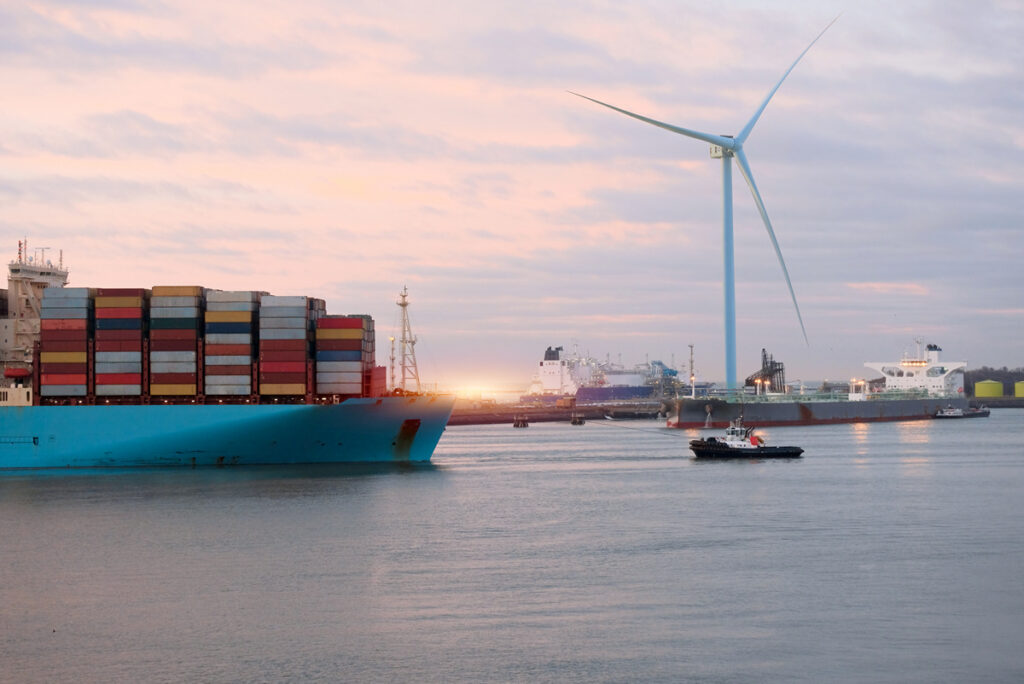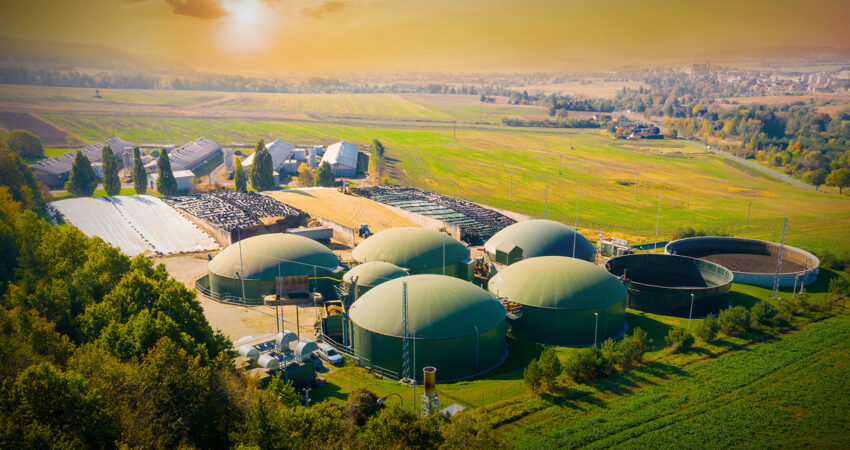Copyright: Adobe Stock #562506171
The energy landscape in Europe is undergoing a profound transformation. The European Union is striving to meet ambitious climate goals, but in the meantime the region’s reliance on cleaner fossil fuels such as liquefied natural gas (LNG) is expected to increase significantly. This article explores the complex dynamics at play, focusing on the intersection of the EU’s green agenda, growing demand for LNG, and the geopolitical challenges that shape Europe’s energy security.
Decarbonisation Plans
The volume of LNG consumption in Europe largely depends on the implementation of decarbonisation plans and packages. In order to turn the EU’s ambitious goals for achieving climate neutrality by 2050 set in the European Green Deal into a binding law, the European Climate Law was adopted in 2021, setting an intermediate target of achieving a 55% reduction in greenhouse emissions by 2030. The Fit for 55 package, also adopted in 2021, highlights specific actions for the EU and its member states to take to cut greenhouse gas emissions by 55% compared to 2019 levels by 2030. Such initiatives include a ban on sales of new vehicles with internal combustion engines from 2035 and a carbon border levy on imported goods. The package was deemed “nothing less than a new industrial revolution in the European Union” by the then state secretary of Germany’s environment ministry, Jochen Flasbarth.
This cascade of initiatives is bringing about a rather rapid transition towards green energy and a radical reorganisation of entire sectors. In the short run, it means that LNG is going to become an essential component of Europe’s energy strategy, particularly as the EU works to phase out coal, traditionally Europe’s major energy source.
Despite being a fossil fuel, LNG burns cleaner than coal and oil. When burned, it generates half the CO2 emissions of coal. Perhaps even more importantly, it does not generate soot or fumes, making it far more suitable for energy generation in densely populated areas.
The REPowerEU Plan – Too Little Too Late
To make things worse, Russia’s invasion of Ukraine forced EU policymakers to eliminate one of the easiest sources of natural gas supplies. The REPowerEU plan, developed in response to energy and geopolitical crises, aims for a substantial increase in renewable energy production. In order to replace natural gas and other fossil fuels with cleaner alternatives, the plan’s ambitious target is to boost renewable energy from 40% to 45% by 2030 and create significant hydrogen production capacities. Specifically, this entails producing 10 million tonnes of renewable hydrogen domestically and importing an additional 10 million tonnes by 2030 in order to replace natural gas, coal, and oil in industries and transport sectors that are difficult to decarbonise. However, achieving these goals by 2030 is quite challenging and is likely to be achieved only by a third.
The EU’s REPowerEU plan raised the 2030 renewable energy target to 42.5%, but projections suggest that the EU will only achieve a 39% share of renewables by that time, writes Brian Gaylord, Principal analyst with Wood Mackenzie. He believes key countries like Germany, Italy, the Netherlands, and Belgium have set national targets that are not ambitious enough, while France has reduced its target from 40% to 35%, favouring nuclear power over renewables. As a result, meeting the 42.5% renewable energy target appears increasingly unlikely. “This will delay the energy transition in the member states, since the current EU climate and energy governance framework has proven insufficient to fill the gap”, agrees Barbara Mariani, EEB Policy Manager for Climate.
This being said, an intense move towards greener energy places the greatest burden on the least protected members of society. The European Court of Auditors has highlighted a worrying trend of public money often being spent to cover costs that polluters should pay. The sudden burden of more expensive energy generation also falls on the poorest citizens since a large proportion of their spending goes on transport and energy costs.
Thirst for LNG

Copyright: Adobe Stock #782878072
As the EU intensifies its efforts to decarbonise, gas imports are expected to rise sharply, and LNG is much more suitable for supply scaling than pipeline gas. In 2023 alone, the EU imported approximately 134 billion cubic metres (bcm) of LNG, representing 43% of the bloc’s total natural gas imports. This figure is set to rise sharply — reaching 150 bcm annually according to IEEFA estimates, or even 190 bcm around 2030 according to S&P Global Commodity Insights. This would solidify the EU’s position as one of the world’s largest LNG consumers.
The rise in LNG consumption in Europe is evident. Seaborne LNG imports accounted for 87% of total gas imports in 2023, up from 80% the previous year. With only a handful of pipeline suppliers left, the EU’s reliance on LNG delivered by sea is set to grow, despite the associated risks. These risks include potential choke points in critical maritime routes like the Suez Canal and the Strait of Hormuz, as well as vulnerabilities in relevant infrastructure. LNG plants worldwide have been working at 76% capacity, dangerously close to the upper limit. In Eurasia and the Middle East, the regions closest to Europe, plants are 95-97% loaded, if calculated based on the IGU World LNG Report 2022. A shutdown of even a few LNG plants due to technical problems would cause a serious gas shortage on the international market.
The Geopolitical Dimension: Russia’s Role in the LNG Market
The geopolitical landscape adds another layer of complexity to Europe’s energy transition. Despite being labelled a pariah state by many in the West, Russia remains a key player in the global LNG market. Russian LNG continues to flow into Europe, rising from 14 bcm in 2021 to 18 bcm in 2023. This upward trend is continuing: in the first 120 days of 2024, EU member states took delivery of 89 shipments of Russian LNG compared to 82 shipments over the same period in 2023.
Maintaining Russia as an LNG supplier is seen by some as a necessary evil to ensure Europe’s energy security. The global LNG market is currently operating at maximum capacity, with little room for disruption. Furthermore, the cessation of Russian gas transit to Europe via Ukraine — a long-standing route increasingly jeopardised by the ongoing conflict — adds to the urgency of maintaining diversified LNG supply lines.
What’s more the United States, currently Europe’s major supplier of LNG, is willing to maintain market prices. The US’s share of European LNG imports has reached 48%, up from 44% in 2022 and 27% in 2021, according to natural gas information provider CEDIGAZ. American producers shy away from long-term contracts however, preferring to operate at market prices. LNG futures are extremely volatile though, with Asian countries often offering tempting prices. When this happens, American producers prefer selling to the highest bidder.
In this context, Russian LNG imports could offer a buffer against supply shocks, a buffer Europe cannot afford to reject at the moment. However, it is of utmost importance for the EU to work out a strategy that will allow it to minimise energy imports from Russia in the medium term and to transition to reliable renewable energy sources in the long run.

